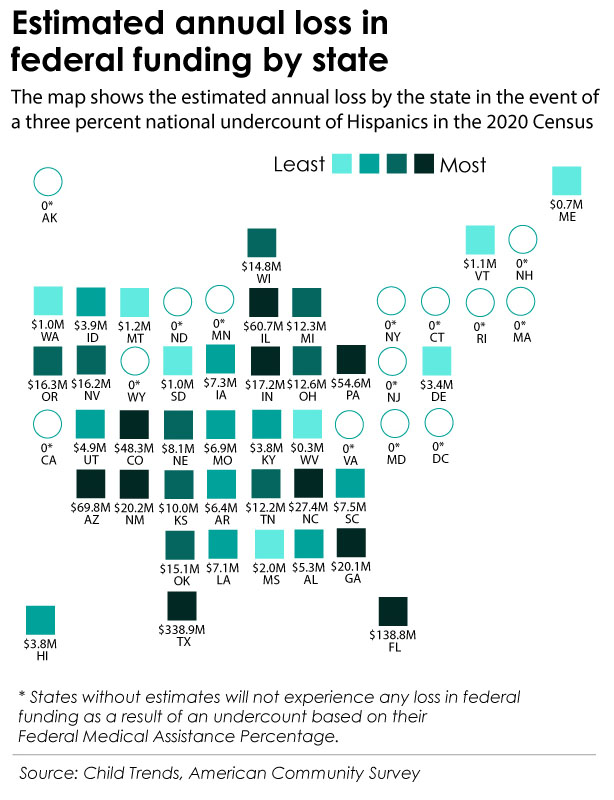TAMPA, Fla. (WFLA) – A new study says Florida could lose more than $100 million in federal funding for programs like Medicaid, due to an expected under-count of the state’s Latin population in next year’s census.
To predict the funding impact on states, the research organization Child Trends considered three scenarios:
- low, with a national Hispanic under-count of three percent, assuming the Census survey does not have a citizenship question, based on the Urban Institute estimate
- medium, with a six percent under-count that assumes the inclusion of a citizenship question and is based on the Census Bureau’s calculation
- high, with a 12 percent under-count that also assumes the use of the citizenship question and is based on a controlled study
According to the data compiled by Child Trends, Texas is the only state expected to lose more federal funding from the estimated three percent under-count of its Latin population, with an expected loss of $339 million to $1.4 billion.
Florida is expected to lose between $139 million to $555 million in funding, which is used for more than 300 different federal programs.
The five key programs are based on an accurate census count to determine each state’s funding are Medicaid, CHIP (Children’s Health Insurance Program), foster care, adoption and Child Care and Development Block Grants (CCDBG).

In Florida, as of May 2019, Florida has enrolled 4,161,073 people enrolled Medicaid and CHIP — an increase of 12.6 percent since the first Marketplace Open Enrollment Period in October of 2013.
More than 19 percent of Tampa’s population is currently on Medicaid, and approximately 15 percent of St. Petersburg’s population is enrolled in Medicaid, meaning that based solely on that one federally-funded program, Tampa Bay residents could be affected by the projected cuts.
Other programs such as the Child Care and Development Block Grants— a primary federal grant program that subsidizes childcare assistance for working families with low incomes— could also see dire outcomes.
The program is already underfunded, serving only 13 percent of eligible children in the Sunshine state. This results in only 82,200 Florida’s 1,281,512 children under the age of six are being served through CCDBG funds.







